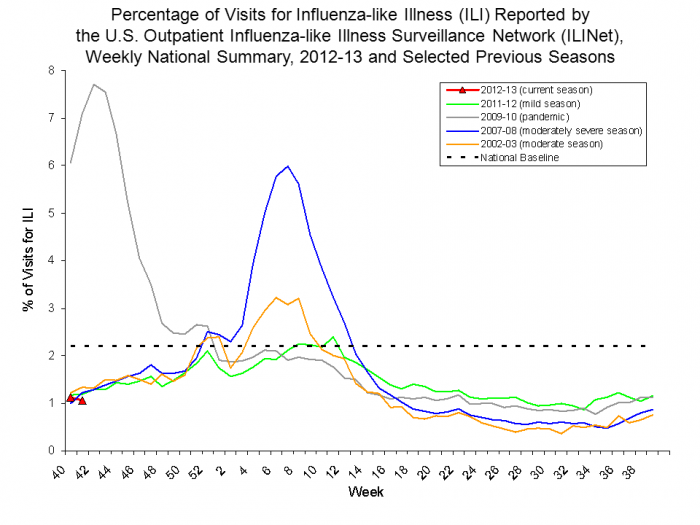It’s that time of year again—flu season. The 2011-2012 influenza season set a new record for the lowest and shortest peak of influenza-like illness. Additionally, the season started later than usual and was very mild. But don’t let that lull you into a false sense of security. Flu seasons are very unpredictable, and vary from year to year in when they start, how severe they are, how long they last, which viruses will spread, and whether the viruses in the vaccine match flu viruses that are circulating. Source: CDC
Older adults are typically the hardest hit group, in addition to children. During the 2011-2012 season, the highest rates of hospitalizations were in people 65 years and older (30 per 100,000).Some very interesting research around influenza and nursing home residents was published earlier this year.
Researchers at Brown University published their findings of a study designed to examine the relationship between influenza and activity of daily living (ADL) decline in nursing home residents.
The researchers found that, based on averages for all nursing facilities, ADL decline, weight loss, pressure ulcer worsening, and infection prevalence exhibit a similar seasonal variation as influenza mortality. The results of multivariate analyses show that influenza mortality was associated with ADL decline (≥4 points) (P<0.001), weight loss (P<0.001), and infections (P<0.001) new or worsening pressure ulcers (P<0.001), and antipsychotic use (P=0.02).
So for nursing homes and the community, continue to focus on vaccination as the most important means of preventing influenza, as recommended by CDC. Other important strategies for decreasing flu’s impact include routine handwashing and minimizing exposure to those with influenza-like illness. Visit CDC’s comprehensive influenza web site for healthcare professionals to learn more.

